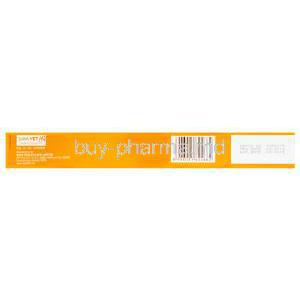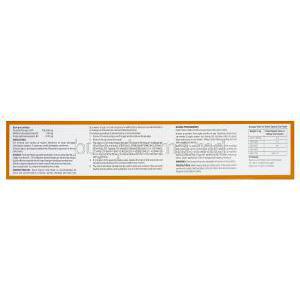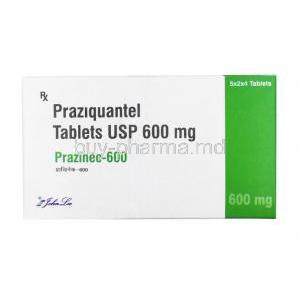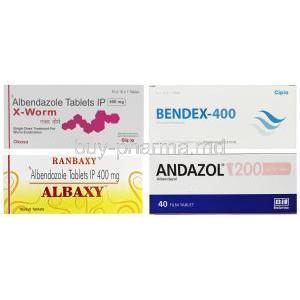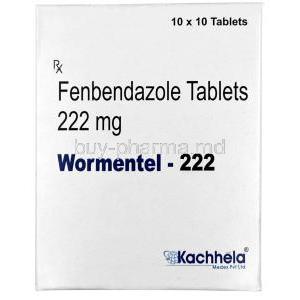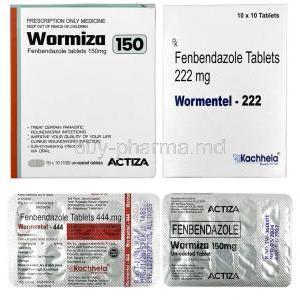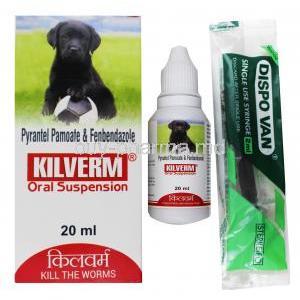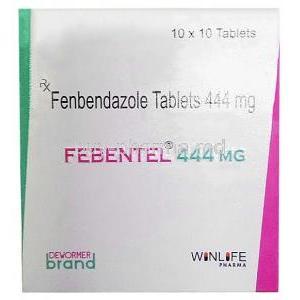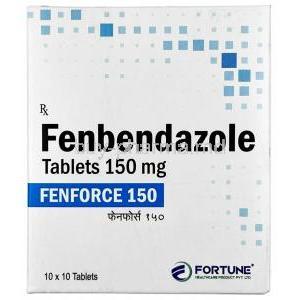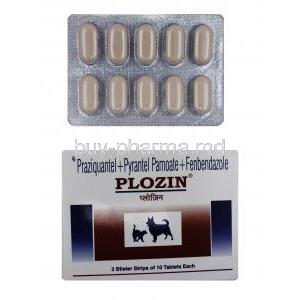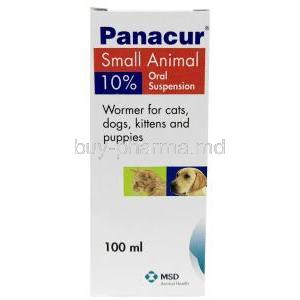Introduction to Pyrantel Pamoate Oral Paste
Overview of Pyrantel Pamoate as an Antiparasitic Agent
Pyrantel pamoate is a potent anthelmintic compound widely utilized in veterinary and human medicine to eliminate gastrointestinal nematodes. This pyrimidine derivative targets neuromuscular function in susceptible parasites, offering rapid and effective deworming.
Historical Development and Veterinary vs. Human Use
Initially developed for livestock and companion animals, pyrantel pamoate later saw expanded utility in pediatric human populations for pinworm treatment. Its long-standing record of safety and efficacy has cemented its role across species in both clinical and farm settings.
Forms Available and Key Advantages of Oral Paste Formulation
Pyrantel is available in suspensions, chewable tablets, and oral paste. The paste formulation offers precision in dosing, ease of administration in animals, and improved palatability—especially crucial for large-breed dogs and equine patients.
Composition and Pharmacological Class
Active Ingredients: Pyrantel Pamoate Concentration Per Gram
Each gram of oral paste typically contains 43.9 mg of pyrantel base as pyrantel pamoate. The exact strength may vary slightly by manufacturer and intended species.
Inactive Ingredients and Formulation Base
The paste includes inert excipients like flavoring agents, emulsifiers, stabilizers, and water-soluble carriers that facilitate easy oral delivery and prolong shelf life.
Classification: Anthelmintic Class and Mechanism-Specific Category
Pyrantel pamoate belongs to the tetrahydropyrimidine class of anthelmintics. It functions as a depolarizing neuromuscular-blocking agent, distinct from benzimidazoles or macrocyclic lactones.
Mechanism of Action: How Pyrantel Pamoate Works
Neuromuscular Blockade in Susceptible Helminths
Pyrantel acts by mimicking acetylcholine at the parasite’s neuromuscular junction. This results in persistent activation and subsequent spastic paralysis of the worm.
Paralytic and Expulsion Effects on Intestinal Worms
Paralyzed helminths lose their grip on the intestinal wall and are expelled via peristalsis. The drug does not require systemic absorption, making it highly selective and gut-localized.
Specificity to Nematodes and Resistance Profile
Effective primarily against nematodes, pyrantel shows high specificity for species like Toxocara, Ancylostoma, and Strongylus. Resistance remains rare but has been documented in high-use settings.
Approved and Common Uses of Pyrantel Pamoate Oral Paste
4.1 Deworming in Domestic Pets (Dogs, Cats)
- Roundworms: Effective against Toxocara canis and Toxascaris leonina.
- Hookworms: Eliminates Ancylostoma caninum and Uncinaria stenocephala.
Routine deworming every 2–4 weeks is recommended for puppies and kittens, with adult pets treated quarterly for ongoing prevention.
4.2 Use in Livestock (Horses, Swine)
- Equine parasites: Controls strongyles, pinworms (Oxyuris equi), and Parascaris equorum.
- Swine: Treats Ascaris suum and other intestinal nematodes.
Scheduled deworming supports herd health and enhances feed efficiency.
4.3 Pediatric Use in Humans (Off-Label, Country-Specific Regulations)
Though primarily veterinary, pyrantel pamoate is permitted for pediatric use in certain regions to treat Enterobius vermicularis and occasionally ascariasis. Availability and indications vary by jurisdiction.
Off-Label and Investigational Uses of Pyrantel Pamoate
Combined Use with Other Anthelmintics
Veterinarians often combine pyrantel with febantel or praziquantel to broaden the spectrum against cestodes and whipworms.
Experimental Use in Controlling Zoonotic Transmission
In shelter and rescue environments, pyrantel has been used preventively to curb the spread of zoonotic parasites between animals and handlers.
Regional Practices in Deworming Protocols for Shelters and Kennels
High-density facilities employ pyrantel-based paste as a first-line agent due to its affordability and broad nematocidal activity.
Dosage Guidelines and Administration Instructions
6.1 Standard Dosage in Dogs and Cats
- Typical dose: 5–10 mg/kg body weight.
- Repeat every 2–3 weeks for young animals, then monthly.
Multiple treatments may be required to eliminate reinfestations.
6.2 Dosage for Horses and Livestock
- Horses: 6.6 mg/kg pyrantel base per dose.
- Swine: Adjusted per weight and reproductive status.
Observe withdrawal times for food-producing animals.
6.3 Pediatric and Off-Label Human Use
Administered as a single oral dose of 11 mg/kg. Dosing tools ensure precise delivery, especially in children under 12 years.
Administration Techniques and Best Practices
Oral Syringe vs. Tube Dispensing
Pastes are dispensed via calibrated syringe or prefilled oral applicators, allowing for controlled administration.
Fasting or Feeding Considerations
No fasting required. Administering with a small amount of food can increase acceptance without compromising efficacy.
Ensuring Complete Dose Ingestion
Ensure the entire paste volume is swallowed; follow up with a small water rinse if necessary.
Side Effects and Adverse Reactions
8.1 Common Side Effects
- Mild GI upset: nausea, vomiting, or transient diarrhea.
- Excess salivation or lip licking in pets.
- Drowsiness in rare cases.
8.2 Serious or Rare Adverse Reactions
- Hypersensitivity reactions: facial swelling, hives, or respiratory distress.
- Ataxia or seizures in case of massive overdose.
- Immediate medical or veterinary attention required if symptoms persist or worsen.
Drug Interactions and Combination Therapies
Interaction with Piperazine
Avoid concurrent use with piperazine, as it may antagonize pyrantel’s neuromuscular effects.
Compatibility with Combination Deworming Agents
Often co-formulated with praziquantel and febantel for broad-spectrum efficacy.
Anticipated Interactions in Immunocompromised Animals or Humans
No immunosuppressive properties, but caution advised when co-administered with other parasiticides or in immune-deficient hosts.
Warnings and Contraindications
10.1 General Warnings
Pyrantel pamoate oral paste should be administered solely in cases of verified helminthic infections. Routine or prophylactic use without proper diagnosis may lead to resistance or unnecessary exposure. - Do not use in animals or humans experiencing severe systemic illness or debilitating conditions. - In weakened individuals, the body’s capacity to metabolize and eliminate the drug may be compromised, increasing risk of adverse reactions. - Veterinary supervision or medical consultation is strongly advised, particularly when treating young, geriatric, or pregnant patients.
10.2 Contraindications
- This medication is contraindicated in individuals or animals with a known hypersensitivity to pyrantel or related tetrahydropyrimidines. - Avoid concurrent use with neuromuscular blocking agents, such as piperazine, due to the risk of pharmacologic antagonism, which may compromise therapeutic efficacy or increase toxicity.
Special Administration Considerations in Specific Populations
11.1 Use in Elderly Animals or Humans
Geriatric patients may exhibit reduced hepatic metabolic capacity, which can affect drug clearance. - Initiate treatment at the lower end of the dosage range. - Monitor closely for signs of toxicity or unusual sedation. - Consider liver function testing in aged animals or humans prior to administration.
11.2 Use During Pregnancy and Lactation
Limited reproductive safety data exists in pregnant animals such as bitches, queens, and mares. - Use only if the potential benefits outweigh the risks. - In lactating animals, pyrantel may be excreted in milk; nursing offspring should be monitored for gastrointestinal effects. - In humans, pyrantel is typically considered pregnancy category C—use with caution and under medical advice, particularly in the first trimester.
11.3 Use in Pediatric and Juvenile Populations
In young animals, pyrantel is generally safe when used according to weight-based guidelines. - Puppies and kittens should reach a minimum age of 2–3 weeks and a minimum weight as specified by product labeling before administration. - In human pediatric use, international health authorities such as the WHO and FDA permit pyrantel use for pinworms in children over 2 years of age. - Watch for dose-related gastrointestinal symptoms or behavioral changes in young patients.
Overdose and Toxicity Management
Clinical Signs of Overdose in Animals and Humans
Symptoms of overdose may vary by species but typically include: - Vomiting, diarrhea, or anorexia - Ataxia, muscle tremors, or hypersalivation - In severe cases: respiratory distress, seizures, or coma
Emergency Management Protocols
- Immediately discontinue the drug. - Induce emesis or perform gastric lavage if within ingestion window. - Supportive care may include IV fluids, activated charcoal, and antiepileptic medication if seizures occur. - Contact a veterinarian or poison control center without delay.
Long-Term Consequences of Repeated Overdosing
Chronic overdosing can result in cumulative toxicity, particularly in hepatic and neuromuscular systems. This may manifest as prolonged weakness, weight loss, or behavioral changes.
Handling, Safety, and Hygiene Precautions
Storage and Disposal of Used Applicators
- Always cap syringes or tubes after use. - Dispose of empty containers and applicators according to local pharmaceutical waste regulations. - Do not reuse syringes or share between animals.
Handwashing and Protective Glove Use
- Wash hands thoroughly after handling the paste. - Use gloves when administering the medication to reduce dermal exposure, especially when treating multiple animals.
Avoiding Cross-Contamination Between Animals
- Use a separate applicator or clean thoroughly between uses. - Avoid simultaneous treatment of animals with unknown infection status to prevent spread of resistant parasites.
Storage Conditions and Shelf Life
Recommended Storage Temperature and Humidity
- Store at controlled room temperature, ideally between 15°C and 30°C (59°F to 86°F). - Keep in a dry place away from excessive humidity, which may degrade the active ingredient.
Light and Air Sensitivity
- Protect from direct sunlight. - Ensure the cap is tightly sealed after each use to minimize oxidation and degradation.
Shelf-Life Post-Opening and Signs of Degradation
- Most formulations remain stable for up to 6 months after opening. - Do not use if the paste changes color, separates, or emits an unusual odor. - Always check expiration date prior to use for safety and efficacy.
Pyrantel Pamoate Oral Paste FAQ
- What is pyrantel pamoate used for?
- How many days to give pyrantel pamoate?
- What happens after taking pyrantel pamoate?
- How fast does pyrantel start working?
- Is pyrantel better than mebendazole?
- What happens if you give too much pyrantel?
- Which is better, albendazole or pyrantel pamoate?
- How many ml of pyrantel pamoate for puppies?
- Can I take albendazole and pyrantel together?
- How many days do I give pyrantel?
- Does pyrantel need to be refrigerated?
- Is pyrantel safe for 2 week old puppies?
- Is pyrantel pamoate safe for dogs?
- Can you give ivermectin and pyrantel together?
- Can worms become resistant to pyrantel?
- Does pyrantel expire?
- How long does pyrantel pamoate stay in your system?
- How much pyrantel pamoate 50mg/ml to give a cat?
- What is pyrantel pamoate for dogs?
- How much pyrantel pamoate for puppies?
- How long does pyrantel pamoate take to work in humans?
- How much pyrantel pamoate for cats?
- What does pyrantel pamoate treat?
- Pyrantel pamoate, how long to work?
- How much pyrantel pamoate for kittens?
- Pyrantel pamoate for dogs, how often?
- How fast does pyrantel pamoate work?
- What worms does pyrantel pamoate kill?
- Is pyrantel pamoate safe for dogs?
What is pyrantel pamoate used for?
Doctors prescribe Pyrantel to address pinworms (enterobiasis, oxyuriasis). Additionally, it can be prescribed for treating worm infections based on your doctor's recommendation. Pyrantel functions by immobilizing the worms.
How many days to give pyrantel pamoate?
It's typically given as a one-time dose to treat pinworm and roundworm infections with a follow-up dose after 2 weeks, for pinworm infestations; meanwhile, for hookworm infections, pyrantel is usually taken daily for 3 days.
What happens after taking pyrantel pamoate?
Nausea, diarrhea, headache, and dizziness
How fast does pyrantel start working?
1-2 hours
Is pyrantel better than mebendazole?
When dealing with infections but not T.trichiura or S.stercoralis, it's best advised for pyrantel pamoate usage; however, if one has either of these or both along with other infections, mebendazole is preferred for treatment.
What happens if you give too much pyrantel?
Vomiting, salivation, decreased appetite, or loose stools
Which is better, albendazole or pyrantel pamoate?
When it comes to hookworm treatment effectiveness, albendazole shows a cure rate of 72%, which is higher than pyrantel pamoates 32%.
How many ml of pyrantel pamoate for puppies?
Puppies are given pyrantel orally at a rate of 1ml, per 10 pounds of body weight from 2 weeks old until they reach 12 weeks of age.
Can I take albendazole and pyrantel together?
Yes
How many days do I give pyrantel?
The typical practice is to administer another dosage every two weeks for pinworm infections and to consume pyrantel daily for three days in cases of hookworm infections.
Does pyrantel need to be refrigerated?
No
Is pyrantel safe for 2 week old puppies?
Yes
Is pyrantel pamoate safe for dogs?
Yes
Can you give ivermectin and pyrantel together?
Yes
Can worms become resistant to pyrantel?
Yes
Does pyrantel expire?
Yes
How long does pyrantel pamoate stay in your system?
24hr
How much pyrantel pamoate 50mg/ml to give a cat?
1 milliliter per 10 pound of body weight
What is pyrantel pamoate for dogs?
It is commonly employed for treating parasites such as intestinal roundworms, hookworms, and stomach worms.
How much pyrantel pamoate for puppies?
1 milliliter per 10 pounds of body weight
How long does pyrantel pamoate take to work in humans?
1-2hrs
How much pyrantel pamoate for cats?
Typically, for dogs and cats, Pyrantel pamoate is administered at a dosage of 2 to 4 mg per pound (4 to 8 mg/kg), given once and repeated after three weeks.
What does pyrantel pamoate treat?
An antiparasitic drug called Pyrantel is commonly prescribed for treating roundworms and other types of worm infections in individuals.
Pyrantel pamoate, how long to work?
1-2 hours
How much pyrantel pamoate for kittens?
Pyrantel Pamoate is dosed out at 0.1 ml per lb weight
Pyrantel pamoate for dogs, how often?
Every 2 weeks
How fast does pyrantel pamoate work?
1-2 hours
What worms does pyrantel pamoate kill?
Roundworms, hookworms, and pinworms
Is pyrantel pamoate safe for dogs?
Yes



